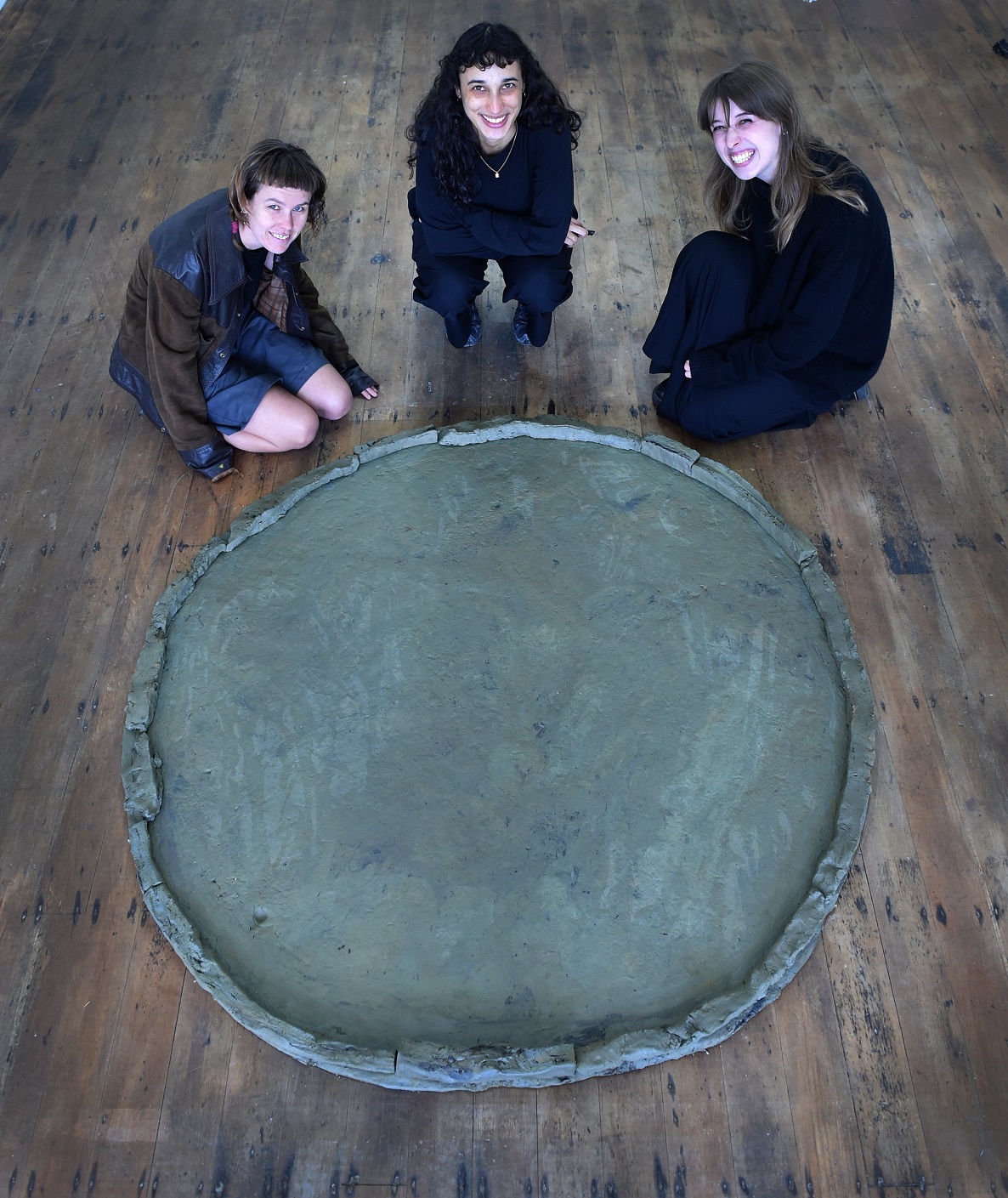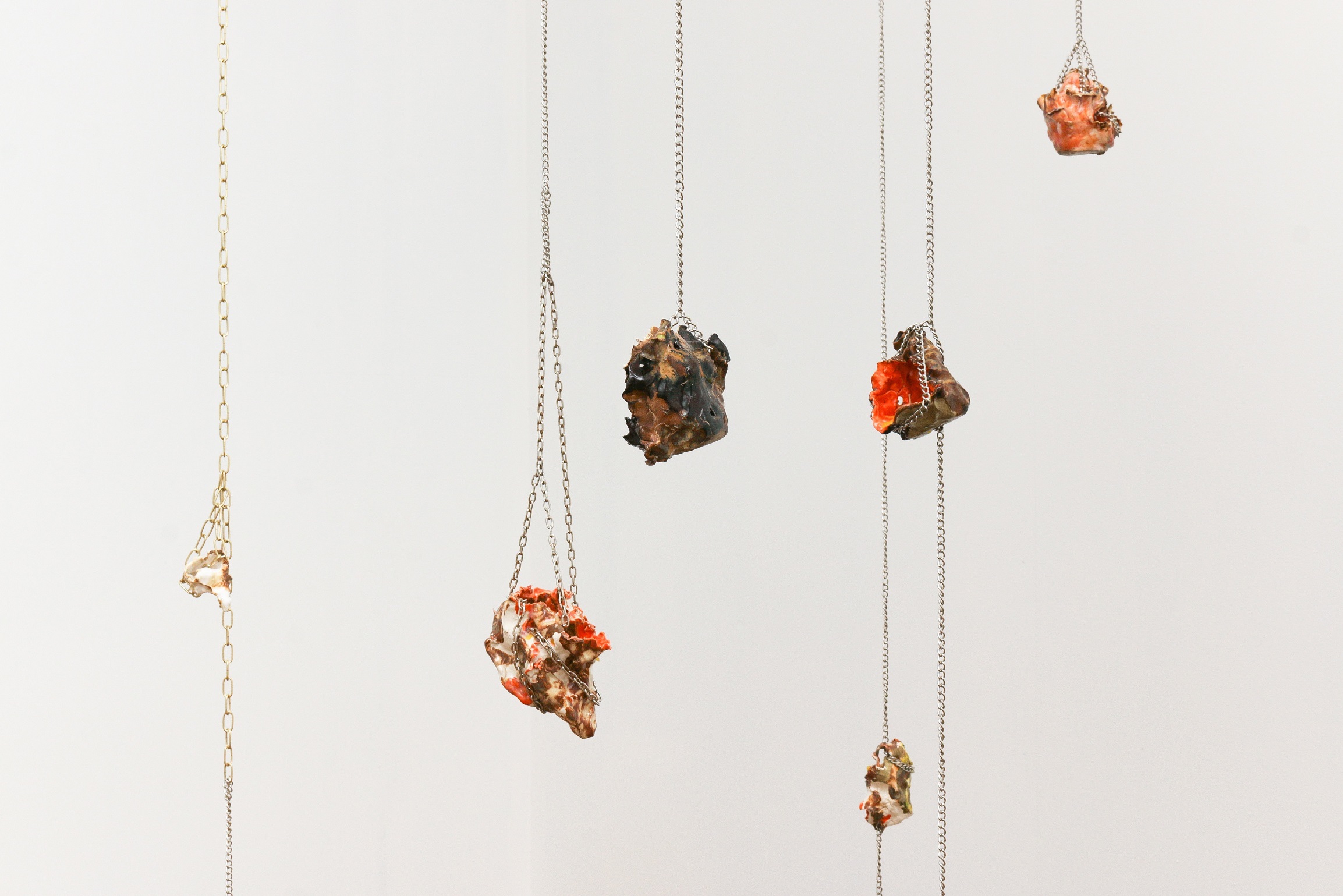
It is the non-fiction writings of French author Georges Perec that brings together three artists.
Clay artists Yana Dombrowsky-M’Baye, Lucy Hill and Taarn Scott were invited to create an exhibition by Blue Oyster Art Project Space.
All were excited about the concept and during conversations over Zoom the trio discovered they all had an affinity for Perec’s close attentiveness to the many ways people and non-humans pass from space to space in their daily lives, forming distinct habits, rituals, anecdotes and encounters.
So they adopted the name of Perec's collection "Espèces d’espaces" for their exhibition using the English translation "Species of Spaces and Other Pieces" and gave each other free rein to develop their own ideas from there.
Having never been to Dunedin or met the other artists in person, Auckland-based Dombrowsky-M’Baye had to use her imagination as she prepared for the exhibition.
"I’m thinking and reading, but I don’t actually know until I’m there. It goes to the element of my practice that relies on the encounter and me not taking control of the space."
Dombrowsky-M’Baye has only recently begun to work with raw unfired clay.
"Working with it in its raw state and letting it break down into its raw state or be recycled. I haven’t seen any other artists working with clay in the same way, so I think it’ll be interesting to share that with Lucy and Taarn, who are also working with clay in unconventional ways."
Her journey with clay began during her studies in spatial design at Auckland University of Technology, which allowed her to explore spatial interventions.
"I found myself really interested in temporal practices and exhibitions, installations and interventions."
She started working in her second year of undergraduate studies in the School of Art and Design’s wet laboratories, working with clay and plaster.
"I became interested in traces and impressions and the malleability of clay in its raw state, where the mark of the maker is ever present. It began to come through in the projects I was doing."
Her creations included bespoke ceramic tiles and dishes that explored the context of the exhibition site. In one installation, she created a raised ceramic ground condition as a way of thinking around interventions around the rahui in the forest to protect kauri trees.
For her master’s degree, she continued making ceramics in traditional ways with fired pieces.
"I found myself with these really heavy materials and I kept thinking about these tombs and graves where everything has eroded except the ceramic vases and artefacts."
The idea her works could be around forever especially those that were just ideas or experiments disturbed her.
"It’s not like having a notebook you can just put on your shelf, these are really solid objects and I felt I had created all this waste while I worked through my ideas."
So at the end of her master’s, she was left several "awkward, ugly" ceramics she did not want to give away.

Seeing the clay revert from a solid object to a workable material fascinated her. So she began to look at recycled clay and matter, collecting as much discarded clay as she could at the wet lab.
"One of my jobs as a technician was to clean the workshop. And there was these buckets which students used to clean up their tools. My job was to tip the water into the sink and get this really stinky amalgamation of clay and whatever and bin it. But I started keeping it.
"I was interested in this sort of, like, excess and rejected, unwanted material that was still clay and still workable if refined and cleaned up a bit."
She began to use the clay in her installations. After each installation, she would recycle the clay to reuse.
Then one gallery was badly flooded during the Auckland floods earlier this year and much of her raw and dry clay was washed away.
"I was actually quite stoked about it. I’ve been working with these ideas of recycling and working with material in less fixed ways than you traditionally would with ceramics. I felt I had collaborated with Mother Nature in the most literal way possible and she had taken this material back to wherever it was going to go to."
It highlighted what she was interested in conceptually — the materials of clay and water.
"I’m really interested in natural materials and unexpected encounters. It’s a very everyday practice. I’m very present in the moment."
She is always reading and listening to podcasts.
"I always have several ideas at the same time. I often find when it comes to shows, I’m responding to the environment I’m in at the time. I feel Lucy and Taarn are similar."
Dombrowsky-M’Baye gathered her ideas together in Auckland but it was not until she came to Dunedin that she began to create.
"Do a lot of exploring and investigating around the city centre and see what materials are available potentially bricks or clay and place them into the gallery and then place them back where they were found. I’m interested in temporary displacement of materials and how that speaks to everyday encounters."
Collaboration is something she has been thinking a lot lately.
"I like to think of my practice as collaborating with human and non-human materials and spaces and by seeing what sort of materials I stumble upon and working out if I can do something with them in a space."
Returning those materials to where she found them was less like "a taking", she says.
"It’s an idea I’m still working through. What am I then doing for the material? Am I giving them a temporary home? I think that every day working with material is what we’re all quite interested in."
Collaboration is something Scott, an Elam Auckland graduate, has been doing a lot of recently with two local artists.
She has found her practice has evolved a lot during the past year with the work done in collaboration having an environmental focus and a poetic understanding of land.

Scott, who manages a local hospice shop part-time, did a lot of welding and sculpture during her studies, but now follows what the work calls for. For one recent exhibition she was welding but for the Blue Oyster show she has created porcelain hives.
"They’re quite different."
She finds the different practices feed into each other.
"Coming at ceramics from a sculpture perspective is quite fun and useful."
Her work for the show is around ritual, including hanging hives with beeswax candles in them.
"There will also be some floor tunnels ripping off the native bees habitat."
Not knowing native flora and fauna very well, it has been chance to get to know more about native bees and their habitats, she says.
She has found working with Dombrowsky-M’Baye and Hill quite harmonious in ways that could not be predicted.
"I’ve enjoyed it. We had to have trust in each other and our different strengths. The shapes are all quite in tune with each other, are all speaking to each other."
As she had made her works before getting together with Hill and Dombrowsky-M’Baye, there was a sense of relief that the language was there linking the works together.
"It’s nice when these things naturally fit. It’s a much more enjoyable way to make art, there is a lot more freedom to play and test things."
Hill, a recent Dunedin School of Art graduate who finds inspiration in nature, also found working with the other artists to be a positive experience.
She and Dombrowsky-M’Baye made works in response to the environment. For Hill, that meant taking inspiration from the courtyard and walls at the back of Blue Oyster, the building’s history and making small clay circles responding to the large sphere Dombrowsky-M’Baye created. They have a shared love of sourcing local clay.
"It was really nice to talk about what we were doing, seeing what the others were doing and responding to that, sharing ideas."
Seeing the exhibition come together on the final day was amazing, she says.
"It was fully formed, it was special to see it all come together."
To see
"Pieces Spaces Species", Yana Dombrowsky-M’Baye, Lucy Hill, Taarn Scott, Blue Oyster Art Project Space, April 22-May 27












